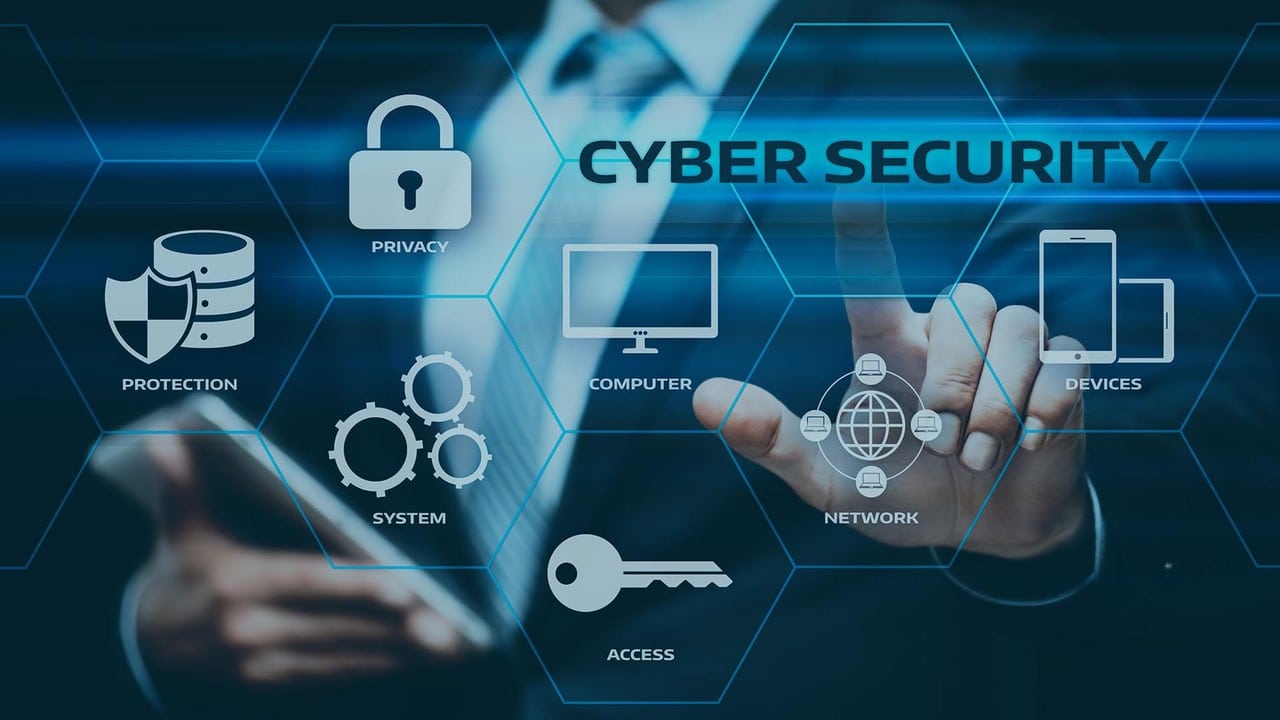Cyber Threats Demystified: Strengthening Digital Defense
The Cyber Threat Landscape
In the vast digital expanse, where innovation converges with vulnerability, the comprehension of cyber threats becomes a paramount quest. This chapter embarks on a journey to unravel the intricate layers of the cyber threat landscape, exploring its ever-shifting nature and emphasizing the imperative need for a robust digital defense.
The Evolving Nature of Cyber Threats
The digital realm is a dynamic ecosystem, and so are the threats that lurk within it. From the rudimentary schemes of yesteryear to the sophisticated exploits of today, cyber threats continually evolve. This evolution demands an acute awareness of the contemporary threat landscape and the foresight to anticipate what may emerge on the horizon.
The Critical Need for Digital Defense Awareness
As our dependence on digital platforms grows, so does the urgency to cultivate a collective consciousness regarding digital defense. Individuals and organizations alike must recognize that the battleground extends beyond the physical realm. Establishing a culture of awareness is not merely an asset; it is an absolute necessity in fortifying our digital citadels.
Unveiling Cyber Threats

Types of Cyber Threats
To navigate the labyrinth of cyber threats, one must first comprehend the adversaries lurking in the shadows. Malware, a term echoing with ominous undertones, represents a digital plague. Phishing attacks, akin to cunning artistry, manipulate human psychology. Ransomware, the digital highwayman, kidnaps and extorts digital assets. Unveiling these threats is the key to crafting effective defense strategies.
Malware: Unmasking the Hidden Menace
Beneath the façade of seemingly innocuous software lies the insidious world of malware. With a sinister touch, malware infiltrates systems clandestinely, akin to a digital infiltrator with a penchant for chaos. Unmasking the hidden dangers of malware requires a meticulous dissection of its multifaceted forms – from elusive viruses that replicate and spread to stealthy trojans that disguise themselves as legitimate programs. Peeling back the layers reveals the intricate web that malware weaves, posing a substantial threat to the integrity and functionality of digital ecosystems.
Phishing: The Deceptive Artistry
In the vast canvas of cyber threats, phishing emerges as a subtle and deceptive art form, preying on the vulnerabilities inherent in human psychology. The cyber trickster employs cunning artistry by dangling virtual bait, luring unsuspecting individuals into divulging sensitive information. Understanding the intricacies of this art is paramount, as phishing attacks manipulate trust, using seemingly legitimate communication to deceive users. Recognizing the subtle hooks employed in phishing ensures the sanctity of digital information, fortifying individuals and organizations against these manipulative cyber maneuvers.
Ransomware: The Digital Extortionist
In the shadowy alleys of cyberspace, ransomware emerges as a formidable adversary, functioning like a digital highwayman. This insidious breed encrypts digital assets, holding them hostage until a ransom is paid. Peering into the motives and methodologies of ransomware is a critical endeavor, shedding light on the urgency of building robust defenses against this digital extortionist. Understanding the intricate dance between ransomware operators and potential victims unveils the gravity of the threat, emphasizing the need for proactive measures to mitigate its impact. The ransomware menace reinforces the importance of cybersecurity resilience in safeguarding digital assets from being held hostage in the ever-evolving landscape of cyber threats.
Impact of Cyber Threats

Financial Consequences
Beyond the intangible realm of digital breaches lies a tangible aftermath – the financial fallout. The cost of cyber attacks extends far beyond immediate recovery expenses, encompassing legal repercussions, business disruptions, and a myriad of unforeseen financial implications.
Counting the Cost of Cyber Attacks
To tally the cost of cyber attacks involves a meticulous examination of both direct and indirect financial ramifications. From incident response expenditures to potential legal liabilities, understanding the comprehensive financial toll is essential for organizations seeking to fortify their digital coffers.
Reputational Damage
In the interconnected web of the digital age, reputation stands as a currency of its own. The reputational damage inflicted by cyber attacks transcends monetary losses, impacting customer trust, stakeholder confidence, and overall market standing.
Beyond the Bottom Line: Reputation at Stake
The intangible nature of a tarnished reputation poses a challenge far graver than mere monetary losses. Restoring trust becomes a Herculean task, underscoring the critical need to integrate reputation management into the fabric of digital defense strategies.
Personal Privacy
Amidst the grand narrative of cybersecurity, the personal tales of individuals often get overshadowed. Yet, at the core of cyber threats lies the potential compromise of personal privacy, amplifying the gravity of digital breaches.
The Personal Toll of Cybersecurity Breaches
Individuals, the unsung casualties of cyber warfare, bear the brunt of compromised personal information. Delving into the personal toll of cybersecurity breaches illuminates the human aspect, emphasizing the urgency of safeguarding privacy in the digital era.
The Anatomy of Cyber Attacks
Initial Access Points
In the grand theater of cyber warfare, understanding where the first act unfolds is critical. Identifying initial access points is akin to fortifying the castle gates against potential invaders, demanding a vigilant eye on potential weak links.
Identifying Vulnerabilities
The digital realm is rife with vulnerabilities – in software, networks, and human behavior. Mapping out these vulnerabilities is akin to creating a cartography of potential breaches, enabling organizations to reinforce their defenses strategically.
Progression Stages
A cyber attack is not a singular event but a multi-act play, progressing through distinct stages. From the initial breach to the eventual data breach, understanding this progression is pivotal for mounting an effective defense at each stage.
From Entry to Data Breach
The journey from the initial breach to a full-fledged data breach is a perilous one. Understanding this journey unveils the potential points of intervention, facilitating the disruption of the attack’s progression and mitigating potential damage.
Digital Defense Strategies

Human Element in Cybersecurity
Employee Training
The human factor, often the wild card in cybersecurity, demands attention. Employee training emerges as the beacon illuminating the path to a more resilient digital defense. Informed and educated employees become an additional layer of defense against potential threats.
The Power of Cybersecurity Education
Recognizing the transformative impact of cybersecurity education is akin to providing a shield to the workforce. Educated employees transcend being mere cogs in the machinery; they become active participants in the collective defense effort.
Building a Cyber-Aware Culture
Establishing a culture of cyber awareness is a collective responsibility that transcends departmental boundaries. When every individual within an organization prioritizes cybersecurity, the overall defense posture is significantly strengthened.
Everyone’s Responsibility in Defense
In the grand symphony of cybersecurity, every team member wields an instrument of defense. Understanding that cybersecurity is not the sole concern of IT but a shared responsibility emphasizes the power of a united front against cyber threats.
Advanced Cybersecurity Measures

Artificial Intelligence in Cyber Defense
The integration of artificial intelligence in cybersecurity is a paradigm shift, akin to introducing a sentinel with unparalleled discernment. AI can identify patterns, predict threats, and respond in real-time, providing an advanced layer of protection beyond human capabilities.
Enhancing Security with AI
Recognizing AI’s role as a force multiplier enhances our comprehension of its symbiotic relationship with human expertise. Together, they create a formidable defense against the ever-evolving landscape of cyber threats.
Threat Intelligence
Staying one step ahead in the game requires a proactive stance, and threat intelligence emerges as the harbinger of foresight. Constant monitoring and analysis of emerging threats enable organizations to adapt and fortify defenses in anticipation.
Protecting Data in Transit and at Rest
Encryption, the digital cloak of invisibility, becomes the guardian of data, whether in transit or at rest. Understanding the mechanics of encryption reinforces its pivotal role in preserving the confidentiality and integrity of sensitive information.
Incident Response and Recovery
Creating an Effective Incident Response Plan
In the tumultuous aftermath of a cyber incident, an effective incident response plan stands as the North Star, guiding organizations through the chaotic seas of uncertainty. Crafted with meticulous attention, this plan serves as a beacon, ensuring a swift and coordinated response that minimizes the impact of the unforeseen. Like a well-orchestrated symphony, it harmonizes the efforts of cybersecurity professionals, enabling them to navigate the complexities of incident resolution with precision and speed. The creation of such a plan is not a mere formality but a strategic imperative, an essential element in the arsenal of digital defenders.
Preparing for the Inevitable
Accepting the inevitability of cyber incidents marks the first step toward cultivating resilience in the face of an unpredictable digital landscape. Rather than viewing incidents as aberrations, organizations must proactively embrace a mindset that acknowledges their occurrence. Preparing for the inevitable demands foresight, a proactive approach that ensures organizations are not caught off guard when the digital storm inevitably arrives. This preparation extends beyond technical measures; it encompasses the development of a resilient organizational culture that can weather the challenges posed by unforeseen incidents.
The Role of Backups
In the intricate dance with digital threats, ensuring quick recovery hinges on the resilience of backup systems. Regularly backing up critical data is not just a precautionary measure; it becomes an indispensable component of a comprehensive digital defense strategy. Like a safety net in the digital realm, backups provide a lifeline in times of crisis, ensuring that the impact of incidents is mitigated. They serve as the guardians of organizational continuity, allowing entities to retrieve essential data and resume operations swiftly, even in the wake of a potentially crippling cyber incident.
Ensuring Quick Recovery
Understanding that recovery is as crucial as prevention underscores the paramount importance of an efficient incident response. Swift recovery is the linchpin in minimizing downtime and mitigating the overall impact of cyber incidents. It’s the decisive moment when organizations reclaim control and bounce back resiliently. The ability to swiftly navigate the recovery process is not just a technical necessity; it is a strategic advantage that ensures organizations emerge from the aftermath of a cyber incident with minimal scars. In embracing the ethos of ensuring quick recovery, digital defenders fortify themselves against the disruptive forces that seek to compromise the digital integrity of their domains.
Future Trends in Cybersecurity
Emerging Threats
The crystal ball of cybersecurity, though murky, provides glimpses into the ever-shifting landscape of emerging threats. These potential dangers, like shadows on the horizon, compel cybersecurity professionals to adopt a proactive stance. Anticipating the nuances of these threats becomes imperative, resembling a strategic chess move to stay one step ahead on the digital chessboard. From evolving malware strains to novel attack vectors, the foresight gained by recognizing emerging threats becomes a potent weapon in the defender’s arsenal.
What to Anticipate in Cybersecurity
The landscape of cybersecurity is a dynamic tapestry, woven with the threads of emerging threats. To anticipate what lies on the horizon is akin to deciphering a cryptic code. Exploring this intricate landscape unveils the future of cybersecurity, offering a roadmap for organizations to navigate the challenges that will materialize. Preparedness and adaptability emerge as the watchwords, guiding cybersecurity professionals to not only react but to proactively shape their defense strategies in anticipation of the evolving threat matrix.
Innovations in Cybersecurity Technology
In the relentless march of technological progress, the realm of cybersecurity witnesses the birth of innovative solutions. These technological advancements act as sentinels, offering enhanced capabilities to counteract the sophistication of modern threats. Embracing these innovations is not merely an option; it is a necessity to ensure that organizations remain at the forefront of digital defense. Whether through artificial intelligence, machine learning, or advanced encryption techniques, organizations must integrate these innovations to create a resilient digital fortress against the ever-evolving threat landscape.
Shaping the Future of Digital Defense
Acknowledging that the actions of today shape the digital landscape of tomorrow underscores the collective responsibility of the cybersecurity community. Proactive measures become the keystones in building a more secure digital world. The evolution of digital defense is not a solitary endeavor; it requires a collective effort. Today’s defenders, through their vigilance and commitment, pave the way for a future where organizations stand resilient against the ever-evolving threat landscape. By shaping the future of digital defense, the cybersecurity community ensures a safer digital world for generations to come.
Collaboration in Cybersecurity

Public-Private Partnerships
In the symphony of cybersecurity, public-private partnerships emerge as the harmonious chords. Collaboration between these entities strengthens the overall cyber resilience of the community, fostering the exchange of knowledge, resources, and expertise.
Strengthening Cyber Resilience Together
Understanding that cybersecurity is a collective effort emphasizes the need for unity. Together, public and private sectors can create a formidable defense against cyber threats, standing as a united front in the face of adversity.
Information Sharing
A collective defense approach demands transparent information sharing. Rapid dissemination of threat intelligence enables a coordinated response to emerging cyber threats, creating a shared shield against the digital onslaught.
A Collective Defense Approach
Recognizing that a collective defense approach is more potent than isolated efforts underscores the importance of unity in the face of cyber threats. Shared knowledge and collaboration enhance overall cyber resilience, presenting a united front against the ever-shifting threat landscape.
Legal and Regulatory Landscape
Compliance in Cybersecurity
Navigating the legal framework surrounding cybersecurity is akin to traversing a complex labyrinth. Compliance ensures organizations adhere to established standards, minimizing legal vulnerabilities in the digital domain.
Navigating the Legal Framework
Understanding the legal implications of cybersecurity breaches is a critical aspect of digital defense. Adhering to regulations not only mitigates legal risks but also contributes to overall cybersecurity resilience.
GDPR and Cybersecurity
In the era of heightened privacy concerns, GDPR stands as a beacon for safeguarding user privacy. Complying with regulations such as GDPR ensures organizations prioritize the protection of individuals’ personal data, enhancing overall digital trust.
Safeguarding User Privacy
Recognizing that user privacy is a fundamental right reinforces the commitment to ethical cybersecurity practices. Compliance with regulations becomes a crucial step in safeguarding user privacy, fostering a digital environment built on trust and transparency.
Conclusion
Empowering Digital Defenders: A Call to Action
In the final chapter of this exploration into the intricate tapestry of cyber threats and digital defense, the call to action resounds. Empowering digital defenders is not a mere suggestion; it is a collective responsibility. By staying informed, adopting advanced technologies, and fostering a culture of cybersecurity, we fortify our digital defenses. It is not just a call to action; it is a commitment to securing the future of our digital world, where resilience and vigilance stand as the guardians against the unseen forces that seek to breach our digital sanctuaries.
Frequently Asked Questions (FAQs) – Cyber Threats Demystified: Strengthening Digital Defense
What is the primary focus of the article “Cyber Threats Demystified: Strengthening Digital Defense”?
The article delves into the intricate world of cyber threats, exploring their evolving nature and the critical need for robust digital defense strategies. It covers a wide range of topics, from types of cyber threats to advanced cybersecurity measures and future trends in the landscape.
Why is understanding the evolving nature of cyber threats emphasized in the introduction?
The digital landscape is dynamic, and cyber threats continually evolve. Recognizing the evolving nature is crucial for staying ahead of potential risks and adopting proactive defense measures to safeguard digital assets.
What are the main types of cyber threats discussed in the article?
The article covers three prominent types of cyber threats – Malware, Phishing Attacks, and Ransomware. Each type is explored in-depth to unmask their hidden dangers and tactics.
How do financial consequences relate to cyber threats?
Financial consequences of cyber attacks extend beyond immediate recovery costs. The article discusses the various financial implications, including legal repercussions, business disruptions, and long-term financial repercussions for organizations.
Why is personal privacy highlighted in the context of cyber threats?
In the interconnected digital world, personal privacy is often compromised in cyber attacks. The article explores the personal toll of cybersecurity breaches, emphasizing the human aspect of digital threats.
How does the article discuss real-life cyber attack examples?
High-profile cyber attack cases are examined to extract valuable lessons. The article analyzes the tactics and techniques employed in these cases to provide insights for organizations to fortify their defenses.
What is the significance of understanding the anatomy of cyber attacks?
Breaking down cyber attacks into their initial access points, vulnerabilities, and progression stages aids in developing targeted defense strategies. It offers a comprehensive understanding of how attacks unfold.

How are digital defense strategies addressed in the article?
The article covers a range of digital defense strategies, including the use of antivirus and anti-malware solutions, firewalls, network security, regular software updates, and advanced measures like artificial intelligence and encryption.
Why is the human element emphasized in cybersecurity?
The human element, including employee training and creating a cyber-aware culture, is vital for effective cybersecurity. The article discusses how educated employees become an additional layer of defense.
What are the future trends in cybersecurity explored in the article?
The article anticipates emerging threats, discusses innovations in cybersecurity technology, and explores what organizations should anticipate in the evolving cybersecurity landscape.
How does the article emphasize collaboration in cybersecurity?
Collaboration, including public-private partnerships and information sharing, is highlighted as a crucial aspect of strengthening overall cyber resilience. The article stresses the importance of a collective defense approach.
Why is the legal and regulatory landscape discussed in the context of cybersecurity?
Navigating the legal framework and complying with regulations, such as GDPR, is essential for organizations to minimize legal vulnerabilities and safeguard user privacy.
What is the call to action in the conclusion of the article?
The conclusion calls for empowering digital defenders through staying informed, adopting advanced technologies, and fostering a culture of cybersecurity. It emphasizes a collective commitment to securing the future of our digital world.
Stay Tuned On Our Content
Dear Readers,
As we navigate the ever-evolving landscape of cyber threats and digital defense in our latest post, “Cyber Threats Demystified: Strengthening Digital Defense,” we invite you to delve even deeper into the realm of cybersecurity. If you’re keen on exploring the critical importance of safeguarding the connected world for a resilient digital future, our internal link, IoT Security: Safeguarding in the Connected World for a Resilient Digital Future, awaits your curiosity. Uncover insights into securing the Internet of Things, an integral aspect of our digital present and future.
In the spirit of continuous learning, we also recommend an external post titled Demystifying the Mitre ATT&CK Framework: Strengthening Cybersecurity Defenses. This insightful piece provides a comprehensive breakdown of the Mitre ATT&CK Framework, offering valuable knowledge to fortify your cybersecurity defenses. The exploration of this framework is a fascinating journey into understanding and countering cyber threats effectively.
Stay tuned for more enriching content as we embark on a collective journey toward a more secure digital future!
Warm regards,
Amucc Team